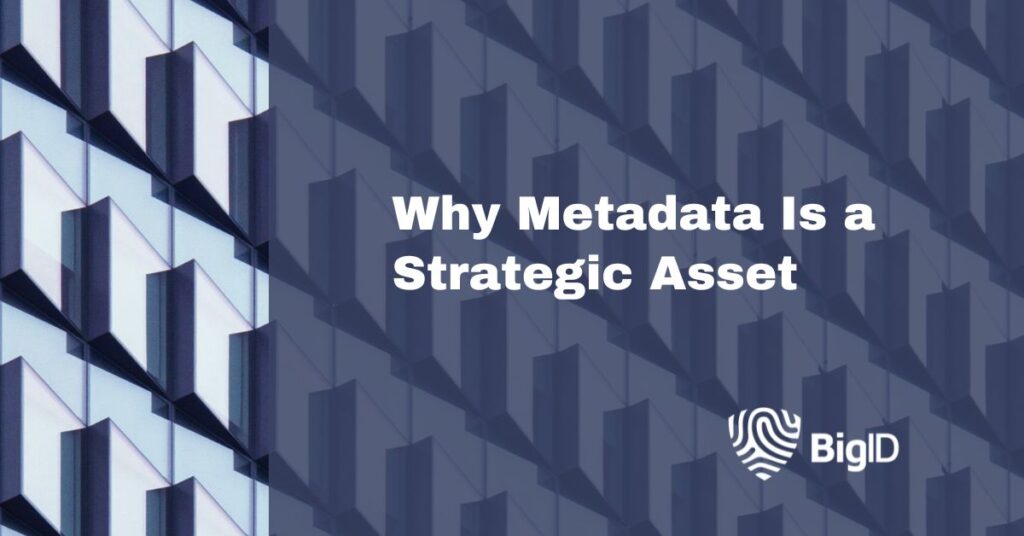There have been many discussions around data as a strategic asset. Some startups have even focused on monetizing and valuing data to sell as a product or be put on a company’s balance sheet. But what about metadata — data about data? Isn’t metadata just a different type of data and how can you begin to monetize data if you don’t understand the data you have? It’s hard to put a number or value on data if you don’t fully understand it.
While there has been attention on building data catalogs and classifying Personal Information (PI), Personally Identifiable Information (PII), and sensitive data, there are many other aspects to using metadata to drive value.
Whether your company is just starting on their data journey or your data journey already consists of a complex environment, treating metadata as a strategic asset is critical to driving data as a strategic asset. Read on to find out more.
What is metadata?
Metadata is simply data about data. A more formal definition from the EDM Council is “data that serves to provide additional information or context about other data.” Here are some examples of metadata as it applies to Privacy, Security, and Governance.
- Personas
- Business owner, technical owner, subject matter expert
- Personal Information, Personally Identifiable information, sensitive data, critical data elements
- Definition, descriptions, data object name, data object type, data object location, timestamps, etc
- Categories, Projects, Lines of Business, Purpose of Use, Risk Level, Priority Ranking
- Clustering, Identification of duplicates, Security status
Benefits of using metadata as a strategic asset
For those of you that have tried to use data to solve a business problem, understanding what data is available, and what can and should be used is challenging. One of the keys to accelerating the use of data is metadata stored in a data registry.
Developing a data registry with critical metadata allows you to:
- Self discover and explore data
- Identify high risk data to drive security prioritization
- Drive privacy policies to meet regulation requirements
Metadata can be the roadmap to find how data is being used, if the data is up to date, if it’s fit for purpose, how to get access to it, who has access to it, and what the critical data companies rely on to run their business.
Ensuring metadata is treated as a strategic asset will accelerate time to value for a data consumer trying to solve a business problem by enabling self-discovery of the data itself. Having the proper strategy to build a data registry will help identify both critically known data as well as dark data (data that is unknown or not used).
Metadata can:
- Build trust by providing insight into data itself – data glossary, data lineage, data quality, data observability
- Prioritize security and privacy actions – data access intelligence, data classification, data retention, data deletion
Outcomes from treating metadata as a strategic asset can increase the value and consumption of your data while reducing both security and privacy data risks.
Building a Data Registry as a metadata system of record
A data registry can include both structured and unstructured data, cover enterprise-wide data at scale and provide a centralized repository for data consumers. Today’s complex data environments may include multiple repositories stored inside a multitude of tools that does not allow a consistent, efficient or even usable data consumer experience. Utilizing a tool that can scan a wide range of data types and connect to data sources provides the ability to build a centralized data registry enabling the automation of metadata and data discovery. This may include existing tools that you may have already invested in to build out data catalogs, manual creation of catalogs using spreadsheet applications, word documents and other technologies.
Utilizing modern day tools that provide connectors to exchange data in a bi-directional method can increase the value of your existing data management investments by enriching metadata with additional discovery and classification capabilities. This is where BigID can accelerate your journey in building a Data Registry. As part of the core product, BigID has a searchable Data Registry, has over 100 connectors to data repositories, and can capture metadata including over 500 classifiers during a single scan. Furthermore, additional capabilities to enrich data with business metadata can be accomplished via applications that integrate with the core data registry. By using BigID’s registry as the metadata system of record, your time to value and understanding of data will be accelerated through automation and modern tool architecture. Combining Artificial Intelligence and Machine Learning with human in the loop processes that can trust but verify the automation as well as enrich the data with business metadata, will improve trust and transparency into your data.
Want to get started using metadata as a strategic asset? Book a 1:1 demo with our experts.

